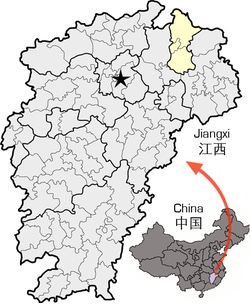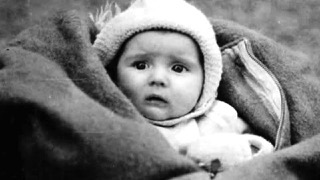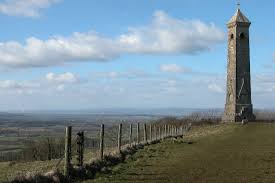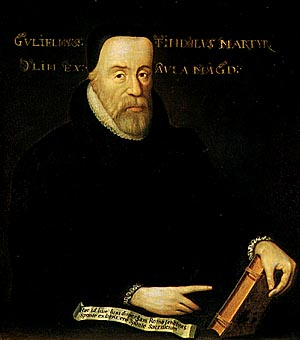Written by: Jenny Sánchez
Quintas Tertullian, an apologist and outspoken defender of the faith in the 2nd century, lived in Carthage (today’s Tunisia) during a time of extreme persecution towards Christians. Upon witnessing the unrelenting violence toward and executions of so many fellow Christians, he wrote to the Roman governor, “the oftener we are mown down by you, the more in number we grow, the blood of the Christian is seed.”
That was the 2nd century. What Tertullian saw as an unparalleled destruction of life would only grow in time.
There have been more Christian’s martyred in the 20th century than all other centuries combined. It would be good and right for us to pause and thank God in humbleness for those witnesses who have joined in the fellowship of Christ’s sufferings to the point of death.

John and Betty Stam, Missionaries to China
I first heard of Betty Stam at some point during my high school years. I don’t remember the occasion, but I do remember that her story made a lasting impression on me, mostly in the form of a question which would appear unexpectedly in my mind throughout my years as an unbeliever, “Why?” “Why would someone go to such a far off place to tell people about Jesus only to die?”
Betty Scott was born in Albion, Michigan in 1906. Her parents became missionaries through China Inland Mission and settled in Qingdao, Shandong province while Betty was still an infant. She grew up in China with a love for God and a deep love and joy in serving the people of China.
Returning to the states in 1923 to attend University, Betty had the opportunity while on a break in 1925, to attend a Keswick conference in England. It was during that conference the verse from Philippians 1:21 entered her heart and moved her deeply,
“For to me to live is Christ and to die is gain.”
This verse served as the confirmation Betty was waiting for, and upon graduating from Wilson University, she enrolled at Moody Bible Institute in Chicago to begin her preparation for the mission field. During those years at Moody, Betty wrote a prayer of her unconditional surrender to Christ.
“Lord, I give up my own plans and purposes, all my own desires, hopes and ambitions, and I accept Thy will for my life. I give up myself, my life, my all, utterly to Thee, to be Thine forever. I hand over to Thy keeping all of my friendships; all the people whom I love are to take second place in my heart. Fill me now and seal me with Thy Spirit. Work out Thy whole will in my life at any cost, for to me to live is Christ. Amen.”
And a simple prayer, from a heart devoted to Christ, was answered.
Finishing her time at Moody, Betty met a handsome young man, John Stam, who was a year behind her in studies, and the two became close friends. John also had intentions of serving Christ in China but knew he would be a year behind Betty in departing for the mission field. Because Betty had given herself to Christ completely, she was able to trust all of the details concerning the time she and John would be separated to her faithful heavenly Father to work out as He saw fit. She said goodbye to John, set off for China and arrived safely in Shanghai on November 4th, 1931 as a China Inland Mission missionary.
Betty Scott was 25 years old, full of life, and ready to meet the challenges of missionary life. After 6 months spent attending a language school, Betty was stationed in Yingshou in the province of Anhui, and in her letters to John, she expressed a deep joy in serving, attending chapel and watching many come to faith in Christ. Her serving joy became a spilling over joy as she was reunited with John and the couple announced their engagement.
 Betty Scott became Betty Stam on October 25, 1933 in Jinan, at the mission station, with over 200 missionaries attending as well as 140 Chinese Christians adding to the couple’s joy. The Stam’s were assigned to a mission station in Jingde, relieving the Warren’s, missionaries who had been serving at the station.
Betty Scott became Betty Stam on October 25, 1933 in Jinan, at the mission station, with over 200 missionaries attending as well as 140 Chinese Christians adding to the couple’s joy. The Stam’s were assigned to a mission station in Jingde, relieving the Warren’s, missionaries who had been serving at the station.
Though John and Betty knew the work in Jingde would be difficult both physically and spiritually, they rejoiced and were glad they were able to serve together. And they rejoiced that a new little Stam would be joining them in their work. Helen Priscilla Stam was born on September 11, 1934, and the Stam’s departure for Jingde was delayed.
 Jingde is a small city in Anhui province. It is mountainous and poor and required about 3 days of travel west from Shanghai. In 1934, Mao Zedong was beginning his ascent to power through the Communist Party. During this time communist bandits were known to raid and terrorize small villages and cities, especially in the mountainous areas. Although this was a concern for John and Betty, John had met with the County Chief in Jingde and been assured of their safety.
Jingde is a small city in Anhui province. It is mountainous and poor and required about 3 days of travel west from Shanghai. In 1934, Mao Zedong was beginning his ascent to power through the Communist Party. During this time communist bandits were known to raid and terrorize small villages and cities, especially in the mountainous areas. Although this was a concern for John and Betty, John had met with the County Chief in Jingde and been assured of their safety.
John, Betty, and baby Helen arrived in Jingde in November of 1934 and immediately began to set up their new home. John was busy planning an evangelistic outreach with a fellow believer named Mr. Lo. John arranged for a meeting with Mr. Lo in nearby Miaoshou, where the outreach would be held, on December 7th.
 On the morning of December 6th, while Betty was giving Helen her bath, gunfire erupted from somewhere outside their home. Realizing that these were the bandits of Mao’s Red Army, Betty quickly bundled Helen in thick clothing, pinned two 5 dollar bills inside the garment, and knelt down with John and the family servants to pray for God’s help and guidance. The bandits entered the house demanding money. John and Betty gave all of the cash they had in their home, treated them courteously, even serving them tea, but were unable to convince the bandits to leave. After taking all of the Stam’s belongings and still not satisfied, they then took the Stam’s, including Helen. They were then led to a makeshift headquarters, and John was forced to write a letter to CIM in Shanghai.
On the morning of December 6th, while Betty was giving Helen her bath, gunfire erupted from somewhere outside their home. Realizing that these were the bandits of Mao’s Red Army, Betty quickly bundled Helen in thick clothing, pinned two 5 dollar bills inside the garment, and knelt down with John and the family servants to pray for God’s help and guidance. The bandits entered the house demanding money. John and Betty gave all of the cash they had in their home, treated them courteously, even serving them tea, but were unable to convince the bandits to leave. After taking all of the Stam’s belongings and still not satisfied, they then took the Stam’s, including Helen. They were then led to a makeshift headquarters, and John was forced to write a letter to CIM in Shanghai.
“To our dear brothers in Shanghai,
Today in Jingde, my wife, child, and myself fell into the hands of the Communists. They demand a ransom of twenty thousand dollars for our release.
They have already taken all our possessions, but our hearts are at peace, and we are thankful to the Lord for the small meal we were given tonight. May God grant you wisdom to know how to handle this, and may He grant us courage and peace. Nothing is impossible to Him; even at this time, He is our marvelous Friend.
Things happened all too quickly this morning. Many rumors in the past days have become reality at last. Nevertheless, the Red Army took the city in only two or three hours, there was really no time to prepare, it was already too late.
May God bless and lead you. As for us, whether by life or by death, may God be glorified.
Yours in the Lord, John Stam
December 6, 1934. Jingde, Anhui”
On the morning of December 7th, John and Betty were stripped of their outer clothes and shoes, and they, along with a large number of captured prisoners, were marched along the road towards Miaoshou, about 12 miles from Jingde.
There, on the morning of December 8, 1934, John and Betty Stam walked through the city of Miaoshou, surrounded by bandits, with crowds of people cruelly mocking them as they passed. They were led up the mountainside to Eagle Hill, where they were forced to kneel down and stretch out their necks, and were brutally murdered.
But what of Helen?
 Betty, no doubt with God’s guiding hand upon her, hid her precious little Helen in the bedding at the home where they had spent the previous night. Helen was found 36 hours later by Mr. Lo, with some powdered milk, a little sugar, and some cookies beside her. And the 2 five dollar bills still pinned inside her clothes. Ten dollars was the price of the milk powder Helen needed in order to survive her journey with Mr. Lo and his family over the mountains to safety. But before they left Miaoshou, there was a heart breaking task to complete.
Betty, no doubt with God’s guiding hand upon her, hid her precious little Helen in the bedding at the home where they had spent the previous night. Helen was found 36 hours later by Mr. Lo, with some powdered milk, a little sugar, and some cookies beside her. And the 2 five dollar bills still pinned inside her clothes. Ten dollars was the price of the milk powder Helen needed in order to survive her journey with Mr. Lo and his family over the mountains to safety. But before they left Miaoshou, there was a heart breaking task to complete.
Mr. Lo searched and found the bodies of John and Betty up on the hillside. He then lovingly sewed up their wounds, he wrapped their bodies in cloths dipped in lime to preserve them, obtained coffins for both John and Betty, and then Mr. Lo simply and solemnly buried them.
Helen was reunited with her grandparents at Wuhu Hospital, where she had been born just 3 months earlier. She was raised in China with them until the age of 5, and then brought back to the States where she was eventually adopted by Betty’s sister. Helen has lived her life quietly, refusing all correspondence and contact from those interested in her parents.
I will end this story with the words from the hearts of 2 people.
One, from Ms. Chen, a Chinese church historian, writing to Helen…
“We know that you wish to remain unknown and obscure. You have refused all requests for interviews, and will not read letters sent by those who cared for your parents…In all this, we beseech you to forgive us Chinese people, who are in debt to you for the blood of your parents, your lonely childhood and adult life (for who could know of your inner world, or how you felt that night when you lay in your swaddling clothes in Miaoshou, with no one aware of what you were going through). We even owe you a gospel debt, if you have stumbled and fallen in your faith…Please accept our heartfelt apology, and please believe that your parents’ blood was not shed in vain, for from the hard, blood-stained ground of China has sprouted fields of lovely flowers – the souls of many who have been saved.”
…and one from Betty Stam herself revealing her heart for Christ.
“When we consecrate ourselves to God, we think we are making a great sacrifice, and doing lots for Him, when really we are only letting go some little, bitsie trinkets we have been grabbing, and when our hands are empty, He fills them full of His treasures.”







 Betty Scott became Betty Stam on October 25, 1933 in Jinan, at the mission station, with over 200 missionaries attending as well as 140 Chinese Christians adding to the couple’s joy. The Stam’s were assigned to a mission station in Jingde, relieving the Warren’s, missionaries who had been serving at the station.
Betty Scott became Betty Stam on October 25, 1933 in Jinan, at the mission station, with over 200 missionaries attending as well as 140 Chinese Christians adding to the couple’s joy. The Stam’s were assigned to a mission station in Jingde, relieving the Warren’s, missionaries who had been serving at the station. Jingde is a small city in Anhui province. It is mountainous and poor and required about 3 days of travel west from Shanghai. In 1934, Mao Zedong was beginning his ascent to power through the Communist Party. During this time communist bandits were known to raid and terrorize small villages and cities, especially in the mountainous areas. Although this was a concern for John and Betty, John had met with the County Chief in Jingde and been assured of their safety.
Jingde is a small city in Anhui province. It is mountainous and poor and required about 3 days of travel west from Shanghai. In 1934, Mao Zedong was beginning his ascent to power through the Communist Party. During this time communist bandits were known to raid and terrorize small villages and cities, especially in the mountainous areas. Although this was a concern for John and Betty, John had met with the County Chief in Jingde and been assured of their safety. On the morning of December 6th, while Betty was giving Helen her bath, gunfire erupted from somewhere outside their home. Realizing that these were the bandits of Mao’s Red Army, Betty quickly bundled Helen in thick clothing, pinned two 5 dollar bills inside the garment, and knelt down with John and the family servants to pray for God’s help and guidance. The bandits entered the house demanding money. John and Betty gave all of the cash they had in their home, treated them courteously, even serving them tea, but were unable to convince the bandits to leave. After taking all of the Stam’s belongings and still not satisfied, they then took the Stam’s, including Helen. They were then led to a makeshift headquarters, and John was forced to write a letter to CIM in Shanghai.
On the morning of December 6th, while Betty was giving Helen her bath, gunfire erupted from somewhere outside their home. Realizing that these were the bandits of Mao’s Red Army, Betty quickly bundled Helen in thick clothing, pinned two 5 dollar bills inside the garment, and knelt down with John and the family servants to pray for God’s help and guidance. The bandits entered the house demanding money. John and Betty gave all of the cash they had in their home, treated them courteously, even serving them tea, but were unable to convince the bandits to leave. After taking all of the Stam’s belongings and still not satisfied, they then took the Stam’s, including Helen. They were then led to a makeshift headquarters, and John was forced to write a letter to CIM in Shanghai. Betty, no doubt with God’s guiding hand upon her, hid her precious little Helen in the bedding at the home where they had spent the previous night. Helen was found 36 hours later by Mr. Lo, with some powdered milk, a little sugar, and some cookies beside her. And the 2 five dollar bills still pinned inside her clothes. Ten dollars was the price of the milk powder Helen needed in order to survive her journey with Mr. Lo and his family over the mountains to safety. But before they left Miaoshou, there was a heart breaking task to complete.
Betty, no doubt with God’s guiding hand upon her, hid her precious little Helen in the bedding at the home where they had spent the previous night. Helen was found 36 hours later by Mr. Lo, with some powdered milk, a little sugar, and some cookies beside her. And the 2 five dollar bills still pinned inside her clothes. Ten dollars was the price of the milk powder Helen needed in order to survive her journey with Mr. Lo and his family over the mountains to safety. But before they left Miaoshou, there was a heart breaking task to complete.

 God placed Tyndale right in the center of world languages where, from an early age, he was exposed to different peoples and cultures. It’s helpful to know that the English language at that time was crude and unrefined, struggling to find a form that was neither Latin nor French. The Bible text that the people heard was always from the Latin and few could understand it. Books were translated into Latin. At the beginning of the 16th century, the famous Bodleian Library at the University of Oxford, where Tyndale would begin studying at the age of 12, contained 6,000 books, and only 60 were in English. The language lacked precision, and William Tyndale changed all of that. He shaped the language at it’s transition point, between middle English and early modern English, and in giving us the English Bible he became the father of Modern English. Tyndale understood the impact of what words, when placed together in a certain order, could say to a reader.
God placed Tyndale right in the center of world languages where, from an early age, he was exposed to different peoples and cultures. It’s helpful to know that the English language at that time was crude and unrefined, struggling to find a form that was neither Latin nor French. The Bible text that the people heard was always from the Latin and few could understand it. Books were translated into Latin. At the beginning of the 16th century, the famous Bodleian Library at the University of Oxford, where Tyndale would begin studying at the age of 12, contained 6,000 books, and only 60 were in English. The language lacked precision, and William Tyndale changed all of that. He shaped the language at it’s transition point, between middle English and early modern English, and in giving us the English Bible he became the father of Modern English. Tyndale understood the impact of what words, when placed together in a certain order, could say to a reader.

 of
of 